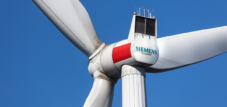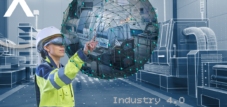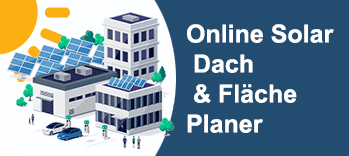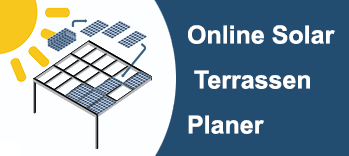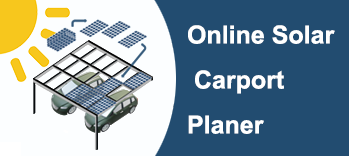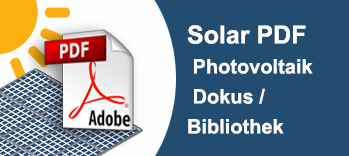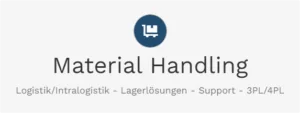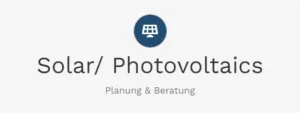Net-Zero Industry Act (NZIA) – Europe’s last lifeline for solar?
Xpert pre-release
Language selection 📢
Published on: September 19, 2025 / Updated on: September 19, 2025 – Author: Konrad Wolfenstein
Solar boom, but wave of bankruptcies: The bizarre paradox that is destroying Europe's industry
More than just a law: Europe's last attempt to end dependence on China
The European solar industry is mired in a deep, paradoxical crisis: While the expansion of solar installations in the EU is breaking records and solar power is becoming the most important source of electricity for the first time, domestic manufacturers are fighting for their very survival. Prominent examples such as the insolvency of the last major German module manufacturer, Meyer Burger, or the relocation of production by Solarwatt to Asia illustrate the dramatic situation. The cause is relentless predatory competition, driven by massively subsidized and extremely cheap solar modules from China, which dominate the European market with a 95 percent market share. Europe is at risk of completely losing its industrial sovereignty in one of the most important technologies of the future and falling into a new, dangerous dependency.
In response to this existential threat, the EU has introduced the Net-Zero Industry Act (NZIA). In force since June 2024, this law is intended to bring about a turnaround and massively strengthen manufacturing capacities for clean technologies in Europe. Its core objective: By 2030, 40 percent of the demand for strategic technologies such as solar modules should come from European production. But can this political lifeline save the already declining industry from collapse? Experts and industry associations express considerable doubts: While measures such as accelerated approvals and new sustainability criteria for public tenders offer hope, the NZIA lacks crucial elements – above all, fresh funding modeled on the US Inflation Reduction Act and immediately effective emergency measures. The following text analyzes whether the Net-Zero Industry Act is the last chance for a resilient European solar industry or whether it will go down in history as a well-intentioned but ultimately ineffective attempt.
Suitable for:
- PV/Solar | Wholesale photovoltaic-EU solar industry before the comeback? So Europe can break China's dominance in PV components
What is the Net-Zero Industry Act and what are its goals?
The Net-Zero Industry Act, or NZIA for short, is a European regulation that entered into force in all 27 EU member states on June 29, 2024. The law is a central element of the Green Deal Industrial Plan and aims to massively expand manufacturing capacity for clean technologies in the EU.
The ambitious main objective of the NZIA is to meet at least 40 percent of the EU's annual demand for strategic net-zero technologies from European production by 2030. These key technologies include solar modules, wind turbines, batteries, heat pumps, electrolyzers, and other climate-friendly technologies. For the solar industry, this specifically means a target of at least 30 gigawatts of operational photovoltaic manufacturing capacity across the entire value chain.
The NZIA pursues a dual strategy: On the one hand, it aims to strengthen Europe's technological sovereignty and reduce dependence on imports, particularly from China. On the other hand, the law aims to position European industry in global competition with the US and other rivals, creating high-quality jobs in the process.
What concrete measures does the NZIA propose?
The Net-Zero Industry Act relies on a comprehensive package of measures to promote European manufacturing of net-zero technologies. At its core are accelerated approval procedures, which are to be simplified through so-called one-stop shops. These single points of contact coordinate all necessary regulatory processes and reduce the bureaucratic burden for companies.
A particularly important innovation concerns public tenders and auctions for renewable energies. From December 30, 2025, the new rules must be applied to at least 30 percent of the auction volume, corresponding to approximately six gigawatts per year per EU country. This must take into account not only prices but also qualitative criteria such as sustainability, resilience, cybersecurity, and responsible business conduct.
The NZIA also enables the designation of Net-Zero Acceleration Valleys, special industrial areas where the establishment of net-zero technologies is particularly encouraged. These clusters are intended to create synergies and support the formation of regional centers of excellence. In addition, strategic projects are identified that enjoy national priority and benefit from shorter approval periods.
Why is the European solar industry in such a dramatic crisis?
The European solar industry is currently experiencing one of the most severe crises in its history. The market is dominated by Chinese manufacturers, which produce approximately 95 percent of the solar modules used in the EU. This overwhelming market power is based on state subsidies, enormous production capacities, and aggressive pricing strategies.
The figures illustrate the extent of Chinese dominance: China has a manufacturing capacity of 552 gigawatts for solar modules, while the entire EU only achieves ten gigawatts. This difference in size allows Chinese companies to produce significantly more cost-effectively than their European competitors through economies of scale.
Price developments in recent years have been particularly dramatic. Between May 2023 and 2024, prices for standard modules roughly halved. Module prices fell to record lows of less than 15 euro cents per watt for low-cost products in 2024. This aggressive predatory competition is forcing many manufacturers to sell their modules below production costs.
What concrete impact does the crisis have on European solar companies?
The impact of the crisis on the European solar industry is devastating, reflected in a wave of plant closures and bankruptcies. The most prominent example is Meyer Burger, the last remaining major European manufacturer of solar modules. The Swiss company was forced to file for insolvency for its German subsidiaries in May 2024 and ceased operations at its sites in Saxony and Saxony-Anhalt in September 2024. Around 600 employees lost their jobs after the search for investors proved unsuccessful.
Solarwatt, another major German solar manufacturer, also capitulated to price pressure. The company shut down its 300-megawatt module production in Dresden in August 2024 and relocated production entirely to Asia. This decision affected around 500 of its 850 employees, with only 350 employees expected to remain by 2025.
The crisis isn't limited to German companies. According to Solarpower Europe, even Chinese manufacturers are affected by the ongoing price war. Jinkosolar reported a 23 percent drop in sales and a 37.1 percent drop in profits. Other major Chinese companies such as Longi Green Technology, Tongwei, Trina Solar, and JA Solar also reported losses.
How is the European solar market developing despite the industrial crisis?
Paradoxically, solar expansion in Europe is booming while the domestic industry is collapsing. In 2024, around 65.1 gigawatts of new photovoltaic capacity were installed in the EU, but this already represented a slowdown in growth compared to previous years. Germany led this expansion with 17.4 gigawatts of newly installed capacity.
Particularly noteworthy was the record-breaking month of June 2025, when solar power became the most important source of electricity in the European electricity mix for the first time. With a share of 22.1 percent, photovoltaics surpassed nuclear energy, wind power, and fossil fuels. This milestone demonstrates the enormous potential of solar technology for the European energy transition.
However, these positive expansion figures conceal a problematic dependency. The majority of installed solar systems are manufactured in China. This development leads to a paradox: Europe is massively expanding its solar capacity, but at the same time is losing the industrial base for this technology.
Can the Net-Zero Industry Act still save the European solar industry?
Assessments of the NZIA's effectiveness as a lifeline for the European solar industry are mixed. Supporters see the law as a significant boost to strengthening domestic production. The European Solar Manufacturing Council welcomes the NZIA as "a key tool on the path to a competitive, sustainable, and resilient EU net-zero industry."
The possibility of considering resilience and sustainability criteria alongside price in public tenders is seen as an important step. This could help European manufacturers gain market share despite higher prices by focusing on quality, sustainability, and security of supply.
Critics, however, point to significant weaknesses in the NZIA. A key problem is the lack of new funding. While the US is investing several hundred billion dollars with the Inflation Reduction Act, the NZIA has to make do without fresh money. The proposed financing instruments merely combine existing programs without providing additional resources.
What structural problems remain despite the NZIA?
Despite the NZIA's good intentions, fundamental structural problems remain, hampering a rapid recovery of the European solar industry. A major obstacle is the still lengthy approval procedures. Although the NZIA proposes improvements, the German Chamber of Industry and Commerce criticizes the proposed deadlines for being "not ambitious enough."
The NZIA's selection of technologies has also been criticized. The German Renewable Energy Association criticizes the "expansive definition of net-zero technologies," which also includes controversial technologies such as nuclear power and carbon capture and storage. This broad diversification could dilute the focus on truly pioneering technologies such as photovoltaics.
Another problem lies in the lack of qualified specialists. There is a particular shortage of well-trained engineers and technicians necessary for the development and operation of the technologies. Although the NZIA envisions the establishment of Net-Zero Industry Academies, training 100,000 workers within three years is considered very ambitious.
How do experts assess the chances of success of the 40 percent target?
Many experts consider achieving the ambitious 40 percent target for 2030 unrealistic. Current market developments argue against a rapid recovery in European solar production. Instead, the decline of the domestic industry is accelerating: Further plant closures and relocation of production to Asia are to be expected.
A fundamental problem lies in the timing discrepancy between the NZIA targets and current market dynamics. While the law sets long-term targets for 2030, companies are fighting for their short-term survival. Many manufacturers have "only weeks" left before insolvency, industry representatives warn.
The European photovoltaic associations ESMC and Solar Power Europe are therefore calling on the EU to develop an immediate action plan for the solar industry. In a joint letter to EU leaders, they emphasize that "without immediate, coordinated action, Europe risks losing its remaining solar manufacturing base."
What role does global trade policy play in the success of the NZIA?
Global trade flows have a decisive influence on the effectiveness of the NZIA. A key factor in the current oversupply of Chinese solar modules in Europe is US trade restrictions. Since the US restricted Chinese imports, an even greater supply has been flooding the European market.
The EU, for its part, has launched investigations into Chinese solar companies for possible unfair subsidies. These investigations could lead to punitive tariffs that would reduce price pressure on European manufacturers. However, such trade policy instruments are controversial because they could increase the costs of solar systems and thus slow the expansion of renewable energies.
The complexity of global supply chains also complicates protectionist approaches. Even if Europe promotes the final assembly of solar modules, critical intermediate products such as silicon, wafers, and solar cells often remain Chinese-made. A truly independent European solar industry would require the development of the entire value chain.
New: Patent from the USA – Install solar parks up to 30% cheaper and 40% faster and easier – with explanatory videos!

New: Patent from the USA – Install solar parks up to 30% cheaper and 40% faster and easier – with explanatory videos! - Image: Xpert.Digital
At the heart of this technological advancement is the deliberate departure from conventional clamp fastening, which has been the standard for decades. The new, more time- and cost-effective mounting system addresses this with a fundamentally different, more intelligent concept. Instead of clamping the modules at specific points, they are inserted into a continuous, specially shaped support rail and held securely. This design ensures that all forces occurring—be they static loads from snow or dynamic loads from wind—are evenly distributed across the entire length of the module frame.
More about it here:
Net‑Zero Industry Act: A beacon of hope or too weak in the race with China?
Are there successful examples of NZIA implementation in individual Member States?
Initial attempts to implement the NZIA principles have shown mixed results. Germany and Austria have already attempted to integrate resilience criteria into their tenders, but so far with "little success." Practical implementation is proving more complicated than initially assumed.
France has launched national support programs with the "Solar Pact," Spain with PERTE financing, and Italy with the "Piano Transizione 5.0" tax credit system. Austria introduced a "Made in EU" bonus. These programs demonstrate that individual member states are quite willing to promote domestic solar production.
However, these national initiatives often remain fragmented and too small to counteract global market trends. The lack of coordination between Member States and the differing funding approaches can even lead to distortions in the European internal market.
Suitable for:
- Despite problems with glass for solar modules: China continues to dominate all stages of the production of photovoltaic modules
What alternatives are there to the NZIA as an industrial policy instrument?
Critics of the NZIA propose various alternative approaches. The German Chemical Industry Association (VCI) calls for a more holistic approach that encompasses not only end-use technologies but the entire industrial value chain. The current focus on individual "net-zero end-use technologies" ignores the importance of upstream industries.
A frequently cited alternative proposal is the creation of a dedicated EU solar fund or a "Clean Tech Manufacturing Bank." Such financing instruments could specifically promote investments in European solar production without requiring the complex regulatory mechanisms of the NZIA.
Other experts advocate for increased bureaucracy reduction and the harmonization of tax frameworks within the EU single market. Instead of new, specific support instruments, the general framework for all industrial sectors should be improved.
How is competition developing between different net-zero technologies?
The NZIA treats solar photovoltaics as one of many strategic net-zero technologies. This level playing field could prove problematic, as different technologies are at different stages of development and have different funding needs. This puts the solar industry in competition with wind power, batteries, electrolyzers, and other technologies for limited funding resources.
The inclusion of nuclear energy in the list of strategic technologies is particularly controversial. While traditional nuclear power advocates welcome this decision, environmental groups and parts of the renewable energy industry criticize it. They fear that nuclear power projects will absorb resources that would be better invested in truly forward-looking technologies.
The varying market maturity of the various technologies also makes a uniform funding strategy difficult. While photovoltaics is already a mature, commercially available technology, other NZIA technologies, such as certain hydrogen technologies, are still in early development phases.
What impact does the NZIA have on small and medium-sized enterprises?
The impact of the NZIA on small and medium-sized enterprises (SMEs) is ambivalent. On the one hand, the simplified approval procedures and one-stop shops could also benefit smaller companies. On the other hand, the German Chamber of Industry and Commerce fears that the new sustainability and diversification criteria in public tenders could make it more difficult for SMEs to participate.
The complex requirements for certification of resilience and sustainability criteria can represent a significant bureaucratic burden for smaller companies. Large international corporations have the resources to undergo complex certification procedures, while SMEs may be deterred by this.
At the same time, specialized SMEs in niche areas of solar technology could certainly benefit. German companies that focus on high-quality inverters, mounting systems, or specialized applications may have better prospects than manufacturers of standard modules.
How does the NZIA affect European energy supply and security?
The NZIA explicitly aims to strengthen European energy security by reducing dependence on imports of critical technologies. The current situation regarding solar modules is often compared to the former dependence on Russian gas. In fact, Europe's dependence on Chinese solar modules is even more extreme than its former gas dependence on Russia.
This dependence poses not only economic but also geopolitical risks. Trade conflicts or political tensions with China could jeopardize the supply of solar modules and thus hinder European climate protection. The NZIA is attempting to counter this risk by building up domestic production capacity.
However, the goal of security of supply partially conflicts with the goal of rapid expansion of renewable energies. Higher prices for European solar modules could slow expansion and thus jeopardize climate targets. These conflicting goals require a careful balancing of short- and long-term priorities.
Which technological innovations could strengthen the competitiveness of European solar manufacturers?
European companies are increasingly relying on technological innovations to differentiate themselves from Chinese mass production. New materials such as perovskite promise efficiencies of up to 29 percent with low degradation. Bifacial modules, which can absorb light from both sides, are establishing themselves as the new standard.
Building-integrated photovoltaics (BIPV) offers further differentiation opportunities. Flexible or transparent modules open up new application areas and could open up niche markets for European manufacturers. Floating photovoltaic systems (Floating PV) and agri-PV systems for agriculture also show potential.
However, these innovations require significant research and development investments, which are difficult to finance given current market pressures. Many European companies must first secure their survival before they can invest in new technologies.
How do environmental and climate protection organizations assess the NZIA?
Environmental and climate protection organizations' assessment of the NZIA is nuanced. The goal of strengthening European production of clean technologies is generally welcomed. The German Renewable Energy Association (BER) sees the law as an "important signal" but simultaneously criticizes significant weaknesses.
Particularly controversial is the inclusion of nuclear energy and carbon capture and storage technologies in the list of strategic net-zero technologies. Environmental groups fear that these technologies, "questionable from a climate and security perspective," could divert resources from truly sustainable solutions.
Another point of criticism concerns the NZIA's lack of funding. Without "fresh money," the law would be unable to provide a powerful response to the US Inflation Reduction Act. After the European elections, the EU should therefore "tackle the issue with renewed vigor."
What role do consumers and public acceptance play in the success of the NZIA?
Public acceptance plays a crucial role in the success of the NZIA. On the one hand, surveys show a high willingness to invest in photovoltaics and battery storage among companies and private property owners. On the other hand, the inclusion of sustainability criteria could lead to higher prices for solar systems, which could dampen demand.
Raising awareness of the benefits of European solar modules is therefore becoming increasingly important. Arguments such as higher quality, better working conditions during production, and reduced CO2 emissions due to shorter transport routes must be communicated to consumers. At the same time, price differences must remain within acceptable limits.
The development of labeling and certification systems for European photovoltaic products could increase transparency and make it easier for consumers to choose sustainable products. However, such systems must be credible and easily understandable to be effective.
Are there any measurable successes or failures of the NZIA?
Since the NZIA has only been in force since June 2024, and many provisions will not take effect until the end of 2025 or later, measurable successes are yet to be seen. The application rules for auctions were only adopted in May 2025, and the first auctions under the new rules are expected in 2026.
The developments so far have been rather sobering. Instead of a recovery in the European solar industry, the decline has actually accelerated: Meyer Burger, Solarwatt, and other major manufacturers have ceased their European production or filed for bankruptcy. This demonstrates that the NZIA measures are coming too late or are insufficient to overcome the acute crisis.
On the positive side, several Member States have launched national support programs based on the NZIA principles. However, whether these programs will be sufficient to reverse the trend remains to be seen. The first reliable measurements of success will not be possible until 2026 or 2027 at the earliest.
Suitable for:
Lifeline or too little, too late?
The Net-Zero Industry Act is undoubtedly the EU's most ambitious attempt to strengthen its industrial base for clean technologies and reduce dependence on Chinese imports. With its goal of meeting at least 40 percent of the EU's net-zero demand from domestic production by 2030, the law sends an important political signal.
However, an analysis of current market developments and industry reactions shows that the NZIA may be too weak as a "last lifeline" for the European solar industry. The ongoing wave of plant closures and bankruptcies, exemplified by the failure of Meyer Burger and the relocation of Solarwatt's production to Asia, demonstrates the urgency of the situation.
Three key weaknesses limit the effectiveness of the NZIA: First, there is a lack of substantial new funding, while competitors like the US are investing hundreds of billions of dollars. Second, many measures will not take effect until 2025 or later, while companies are currently fighting for their survival. Third, the broad diversification across different technologies may be too focused to address the specific crisis facing the solar industry.
Nevertheless, it would be premature to consider the NZIA a failure. The first auctions with sustainability criteria will not begin until 2026, and the long-term structural improvements could certainly have an impact. The decisive factor will be whether the EU is willing to back the NZIA with substantial financial resources and to adjust it as needed.
For the European solar industry, the NZIA thus remains more of a beacon of hope than a lifeline. Without additional, massive support measures and accelerated implementation, Europe risks squandering its last chance for an independent solar industry. The next two to three years will show whether the political will is sufficient to preserve this strategically important industry.
Look, this little detail saves up to 40% installation time and costs up to 30% less. It's from the USA and patented.

NEW: ready -to -mount solar systems! This patented innovation accelerates your solar construction massively
The heart of ModuRack 's innovation is its departure from conventional clamp fastening. Instead of clamps, the modules are inserted and held in place by a continuous support rail.
More about it here:
Your partner for business development in the field of photovoltaics and construction
From industrial roof PV to solar parks to larger solar parking spaces
☑️ Our business language is English or German
☑️ NEW: Correspondence in your national language!
I would be happy to serve you and my team as a personal advisor.
You can contact me by filling out the contact form or simply call me on +49 89 89 674 804 (Munich) . My email address is: wolfenstein ∂ xpert.digital
I'm looking forward to our joint project.













